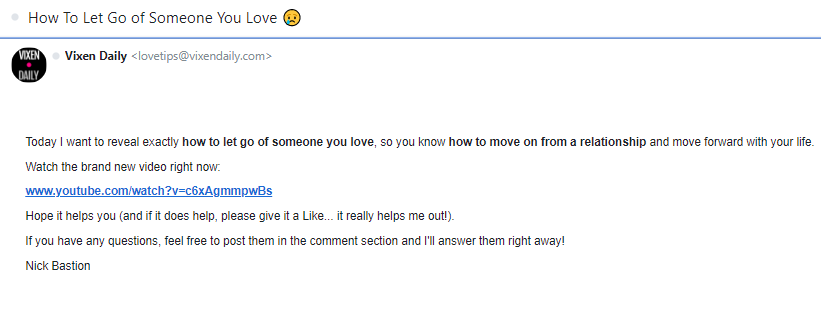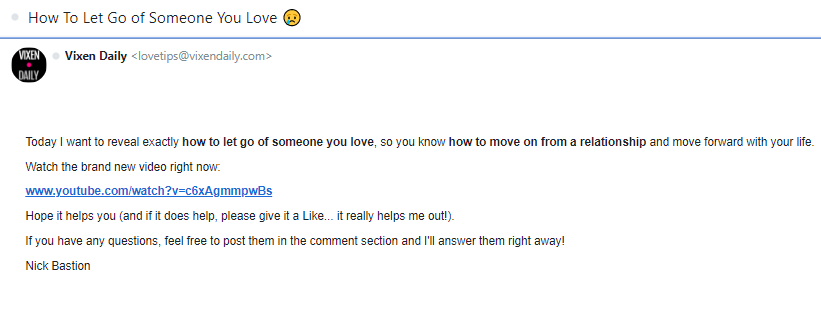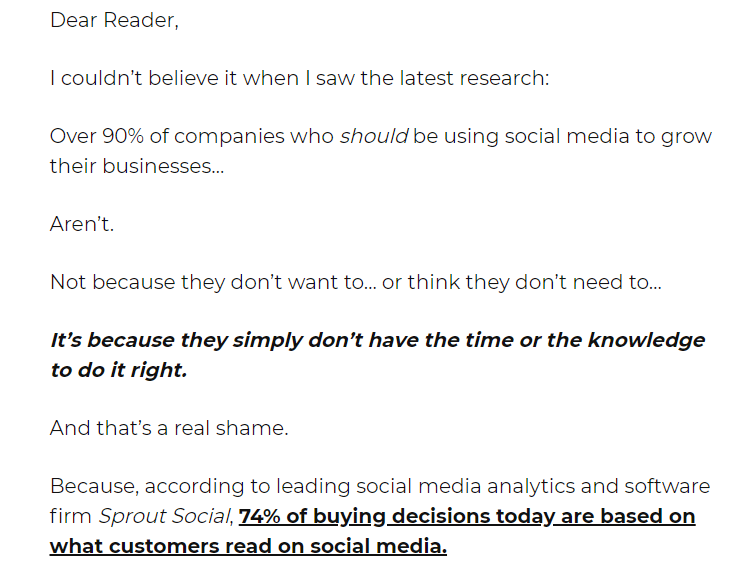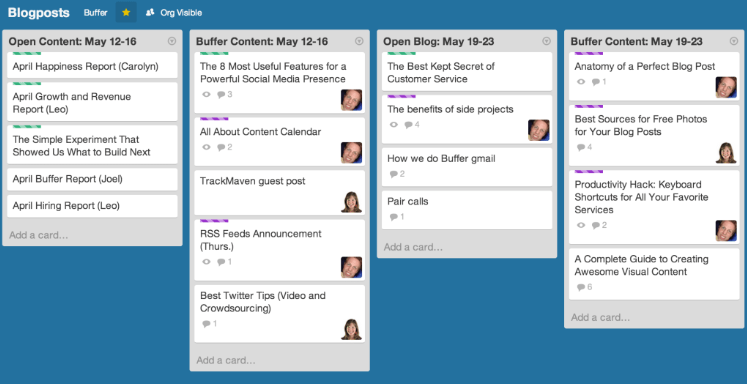MARKETING
10 Content Marketing Skills You Need to Master (Plus Tips on How to Master Them)

In a world of ad blockers and AI automation, content marketing is essential to your marketing plan.
For example, the number of people using ad blockers has risen by 10% in six years. No matter how much you spend on your paid advertisements, there’s a 26% chance your target audience won’t even see them.
Voice search is growing. To date, there are 4.08 million voice assistants in use worldwide. This means users can get answers to their online queries without even visiting a website. In the future, the only content people will read is authority content written by experts.
So, now it’s time to focus all your energy on content marketing!
But wait…
Not so fast.
Because there’s content marketing that works. And there’s content marketing that doesn’t.
To achieve the former, you first need to master the right content marketing skills for success.
What are these skills?
The Top 10 Content Marketing Skills to Learn for Greater Brand Success
The good news is you don’t need a special degree or inborn talent to master these 10 essential content marketing skills. All you need is to know what these skills are and to practice until you’ve mastered them.
Let’s get started!
Skill 1: Detective Work – Digging Up Facts About Your Audience
No matter how compelling your content is, you won’t convert anyone if you don’t know exactly who you’re speaking to.
For instance, look at this content from Vixen Daily’s email campaign.

The email holds enticing promise to readers who want to move on after a breakup. But what makes it compelling isn’t fancy wording or clever phrases. It’s simply that Nick Bastion knew his audience’s pain and need before writing it.
When you know your audience intimately, producing content they’ll devour becomes easy.
Here are a five powerful ways to put on your detective’s cap and dig up clues about your audience:
- Use Google Analytics to find out who’s visiting your website. Analytics gives you information like the names, ages, and genders of your site visitors.
- Go on Quora or Reddit and research topics around your niche. What are people saying? What are their fears/desires/dreams? Reading what they talk about will help you understand them on a deeper level.
- Take note of how users respond to your content. With a tool like BuzzSumo, you can learn how people are reacting to what you write. Analyze your top engaged posts and discover what made them appealing to your audience.
- Offer surveys (with incentives like free downloads – a mini e-book or cheat sheet work great).
- Engage with people in the comment section of your blog. Listen to what they’re saying and respond personally and directly.
Remember, speaking to your audience should be like conversing with a friend. The better you know this friend, the more personal and appealing your message will be.
Skill 2: The Art of Subject Matter Expert Interviewing
To write amazing content, you need to be an expert on your topic.
Does this mean you need to enter medical school to write a blog about health issues and treatments?
Not necessarily. When you master the art of conducting subject matter expert interviews, you can produce authority content even if you don’t have a degree in the niche you write in.
But you can’t just jump into an interview with an expert and ask any question that comes to your mind. Remember, the value of the information you get depends on the quality of your questions.
Here are five tips to make your interviews seamless and value-rich:
- Be prepared. You don’t want to come to an interview with absolutely no idea on the topic. Rather, you want the interview to be a deep dive into the topic. So, before you call your SME (Subject Matter Expert), do as much research as you can. From your research, make a list of questions you can’t find the answers for online.
- Skip the dead air with open-ended questions. You want your SME to gush over the topic. You want them to feel excited. To do that, whet their appetite with unusual questions. For instance, instead of asking, “Is your profession inspiring?” you can ask, “Can you give me some facts most people don’t know about your profession?”
- Bring your content outline with you when you interview. Asking a bunch of random, unrelated questions wastes time. To avoid this, base your questions on the outline you prepare for your content. This will help you ask specific, driven questions you can use in your writing. For instance, if you’re going to interview a psychiatrist about Bipolar disorder, it’s best to skip questions about other types of mental illness.
- Record your conversation. Later on, you’ll want to go back over the exact words your SME said during the interview. Also, keeping busy catching up with notes will distract you from what the SME is saying in the moment.
- Don’t be afraid to ask for clarification. If there’s something you don’t understand during the interview, ask! This can open doors for an even deeper dive into the topic.
When you approach interviews with a genuine passion for your topic, there’s nothing you can’t dig up from the experts’ knowledge banks.
Skill 3: Writing Each Piece of Content with a Goal in Mind
Writing random content wastes time without doing much for your brand. What you need to do is attach a specific goal to every single piece you write.
For instance, look at this sales copy from AWAI.

The lead is interesting and informative, but this piece has a main goal: to compel readers to buy the How to Make Money as a Social Media Expert course at half its usual price.
Remember, goals aren’t only specific to selling products or services. For instance, you can write a lead magnet to grow your email list. You can write an email series with links to different blogs on your website.
You can write an authority blog to gain your audience’s trust. And so on. The secret is to determine the goal of every single piece of content you write.
Skill 4: Knowing How to Stand Out
Your goal is to compel your audience to read your content instead of your competitor’s. How do you do that? By providing content you can’t find anywhere else online.
Here’s how to come up with this content:
- Spy on your competition. What are they doing right? What’s missing in their content that you can add to yours?
- Present content uniquely. Your content can be similar to what your competitors are saying (because who can change facts?), but if you package it differently, it’ll always look like something new.
- Develop your own personal style. You’ll be surprised to find how many people will keep reading what you write because of the way you write it. For instance, maybe you take technical subjects like best SEO practices and write about them in a way that’s fun, engaging, and easy-to-follow. People will read your blog instead of blogs packed with jargon and long paragraphs of text.
Remember, though, not to go too far with uniqueness. Sometimes, there’s a reason why your competition isn’t doing something.
Skill 5: Keyword Research Savviness
Keywords don’t only help you rank higher on Google, they act as the spine of your content. Keywords direct what you say and allow you to stay relevant with what people want to read.
So, how do you choose keywords to use in your content?
- Go for long-tail keywords. For example, instead of choosing “dress,” go for “Walt Disney princess dresses for kids.” Keywords like this help direct quality traffic to your site.
- Choose low competition keywords. If you go for a keyword like “shoes,” you’ll find yourself up against content from huge brands like Adidas and Nike. As a rule of thumb, go for keywords with a score below 50.
- It’s OK to select a keyword with low search volume. As long as there are people searching for this keyword, creating content around it will get you results.
To help you find the best keywords for your content, you can use tools like KWFinder and SEMrush.
Skill 6: Looking Ahead – Planning Content Way Ahead of Time
You don’t want to wake up one morning panicking because you have to produce content but have no idea what to write. To avoid this, create a content calendar.
For example, here’s what Buffer’s content calendar looks like.

With a content calendar, you’ll avoid problems like repetitive content and stay up-to-date with events like holidays and special occasions.
Always remember, however, to leave room for spontaneity. For example, if a relevant question from one of your followers suddenly pops up on your Twitter account, why not address it at length in a blog?
Skill 7: The Ability to Repackage Content
The goal above begs the question, “How on earth can I come up with enough new topics to fill an entire calendar?”
The good news is you don’t have to. You can take older content you produced and simply repackage it.
For instance, you can take a 3,000-word guide and turn it into three separate blog posts. You can turn those three posts into videos.
You can take the sub-headers in a long blog and turn each one into a separate post. You can update an old post with new stats and tips.
The key is to be creative. In no time, you’ll have enough content to flood your yearly content calendar!
Skill 8: Optimizing for Voice Search & AI
As mentioned earlier, voice search is a major trend to watch out for. If your content isn’t optimized for voice search, chances are low Google will choose it to answer a searcher’s query.
So, what are the best practices to follow when optimizing for voice search?
Here are a few:
- Use whole questions instead of phrases. According to Google, 41% of people imagine themselves talking to a friend when addressing their voice assistants. When addressing friends, we don’t go “Hey Bert…restaurant near me.” Instead, we use question phrases with words like where, when, which, and how. Use whole questions in your content to optimize it for voice search.
- Structure your content to be featured in snippets. With voice search, users no longer need to click through to a website to get questions answered. Google will find the answer for them via their voice assistant. The good news is the answer they get can come from your site. To increase this chance, divide your content into relevant H2s and H3s and use your keywords in them. Also, use numbered and bulleted lists.
Skill 9: Using Links for Higher Authority & Relevance
Links are essential to your content. They can:
- Help Google understand what your site is about by connecting it with high-authority sites in the same niche.
- Show Google which of your pages are most important (by linking to them).
- Invite other influencers to link to you (if your content is stellar).
The key to choosing the best links is to analyze them with Alexa’s free tool. If the site ranks below 100,000 it’s good to go to use in content.
Skill 10: Measuring Your Content’s Success
Attaching metrics to your content will help you determine whether the content is successful or needs improvement. Here are three great ways to measure content success:
- Email click-through rate. If people are clicking the links in your email series, take note of what makes this series different from others.
- Bounce rate. Do people leave your site without clicking through to other pages? The rate at which they do so is your bounce rate. If people click away more than 70% of the time, you need to improve your content.
- Scroll depth. Do people read your introduction and then leave the page? Or do they scroll all the way to the bottom? At what point do they stop reading? When you analyze what’s working and what’s not, you’ll be able to strengthen your content.
Mastering Content Marketing Skills for Your Brand’s Future Success
Content marketing is powerful, but that’s only if it’s done right.
And doing it right doesn’t mean taking the web by storm with a flood of random blog posts and web pages.
Rather, it’s digging up what your specific audience wants to know. It’s talking to them as a friend, in your own unique way and voice. It’s keeping up with current trends in technology, but only so you can serve your audience better.
When you master these skills, your content strategy will lift you to success in no time.
More Resources:
Image Credits
All screenshots taken by author, February 2020
MARKETING
18 Events and Conferences for Black Entrepreneurs in 2024

Welcome to Breaking the Blueprint — a blog series that dives into the unique business challenges and opportunities of underrepresented business owners and entrepreneurs. Learn how they’ve grown or scaled their businesses, explored entrepreneurial ventures within their companies, or created side hustles, and how their stories can inspire and inform your own success.
It can feel isolating if you’re the only one in the room who looks like you.
MARKETING
IAB Podcast Upfront highlights rebounding audiences and increased innovation


Podcasts are bouncing back from last year’s slowdown with digital audio publishers, tech partners and brands innovating to build deep relationships with listeners.
At the IAB Podcast Upfront in New York this week, hit shows and successful brand placements were lauded. In addition to the excitement generated by stars like Jon Stewart and Charlamagne tha God, the numbers gauging the industry also showed promise.
U.S. podcast revenue is expected to grow 12% to reach $2 billion — up from 5% growth last year — according to a new IAB/PwC study. Podcasts are projected to reach $2.6 billion by 2026.
The growth is fueled by engaging content and the ability to measure its impact. Adtech is stepping in to measure, prove return on spend and manage brand safety in gripping, sometimes contentious, environments.
“As audio continues to evolve and gain traction, you can expect to hear new innovations around data, measurement, attribution and, crucially, about the ability to assess podcasting’s contribution to KPIs in comparison to other channels in the media mix,” said IAB CEO David Cohen, in his opening remarks.
Comedy and sports leading the way
Podcasting’s slowed growth in 2023 was indicative of lower ad budgets overall as advertisers braced for economic headwinds, according to Matt Shapo, director, Media Center for IAB, in his keynote. The drought is largely over. Data from media analytics firm Guideline found podcast gross media spend up 21.7% in Q1 2024 over Q1 2023. Monthly U.S. podcast listeners now number 135 million, averaging 8.3 podcast episodes per week, according to Edison Research.
Comedy overtook sports and news to become the top podcast category, according to the new IAB report, “U.S. Podcast Advertising Revenue Study: 2023 Revenue & 2024-2026 Growth Projects.” Comedy podcasts gained nearly 300 new advertisers in Q4 2023.
Sports defended second place among popular genres in the report. Announcements from the stage largely followed these preferences.
Jon Stewart, who recently returned to “The Daily Show” to host Mondays, announced a new podcast, “The Weekly Show with Jon Stewart,” via video message at the Upfront. The podcast will start next month and is part of Paramount Audio’s roster, which has a strong sports lineup thanks to its association with CBS Sports.
Reaching underserved groups and tastes
IHeartMedia toasted its partnership with radio and TV host Charlamagne tha God. Charlamagne’s The Black Effect is the largest podcast network in the U.S. for and by black creators. Comedian Jess Hilarious spoke about becoming the newest co-host of the long-running “The Breakfast Club” earlier this year, and doing it while pregnant.
The company also announced a new partnership with Hello Sunshine, a media company founded by Oscar-winner Reese Witherspoon. One resulting podcast, “The Bright Side,” is hosted by journalists Danielle Robay and Simone Boyce. The inspiration for the show was to tell positive stories as a counterweight to negativity in the culture.
With such a large population listening to podcasts, advertisers can now benefit from reaching specific groups catered to by fine-tuned creators and topics. As the top U.S. audio network, iHeartMedia touted its reach of 276 million broadcast listeners.
Connecting advertisers with the right audience
Through its acquisition of technology, including audio adtech company Triton Digital in 2021, as well as data partnerships, iHeartMedia claims a targetable audience of 34 million podcast listeners through its podcast network, and a broader audio audience of 226 million for advertisers, using first- and third-party data.
“A more diverse audience is tuning in, creating more opportunities for more genres to reach consumers — from true crime to business to history to science and culture, there is content for everyone,” Cohen said.
The IAB study found that the top individual advertiser categories in 2023 were Arts, Entertainment and Media (14%), Financial Services (13%), CPG (12%) and Retail (11%). The largest segment of advertisers was Other (27%), which means many podcast advertisers have distinct products and services and are looking to connect with similarly personalized content.
Acast, the top global podcast network, founded in Stockholm a decade ago, boasts 125,000 shows and 400 million monthly listeners. The company acquired podcast database Podchaser in 2022 to gain insights on 4.5 million podcasts (at the time) with over 1.7 billion data points.
Measurement and brand safety
Technology is catching up to the sheer volume of content in the digital audio space. Measurement company Adelaide developed its standard unit of attention, the AU, to predict how effective ad placements will be in an “apples to apples” way across channels. This method is used by The Coca-Cola Company, NBA and AB InBev, among other big advertisers.
In a study with National Public Media, which includes NPR radio and popular podcasts like the “Tiny Desk” concert series, Adelaide found that NPR, on average, scored 10% higher than Adelaide’s Podcast AU Benchmarks, correlating to full-funnel outcomes. NPR listeners weren’t just clicking through to advertisers’ sites, they were considering making a purchase.
Advertisers can also get deep insights on ad effectiveness through Wondery’s premium podcasts — the company was acquired by Amazon in 2020. Ads on its podcasts can now be managed through the Amazon DSP, and measurement of purchases resulting from ads will soon be available.
The podcast landscape is growing rapidly, and advertisers are understandably concerned about involving their brands with potentially controversial content. AI company Seekr develops large language models (LLMs) to analyze online content, including the context around what’s being said on a podcast. It offers a civility rating that determines if a podcast mentioning “shootings,” for instance, is speaking responsibly and civilly about the topic. In doing so, Seekr adds a layer of confidence for advertisers who would otherwise pass over an opportunity to reach an engaged audience on a topic that means a lot to them. Seekr recently partnered with ad agency Oxford Road to bring more confidence to clients.
“When we move beyond the top 100 podcasts, it becomes infinitely more challenging for these long tails of podcasts to be discovered and monetized,” said Pat LaCroix, EVP, strategic partnerships at Seekr. “Media has a trust problem. We’re living in a time of content fragmentation, political polarization and misinformation. This is all leading to a complex and challenging environment for brands to navigate, especially in a channel where brand safety tools have been in the infancy stage.”
Dig deeper: 10 top marketing podcasts for 2024
MARKETING
Foundations of Agency Success: Simplifying Operations for Growth


Why do we read books like Traction, Scaling Up, and the E-Myth and still struggle with implementing systems, defining processes, and training people in our agency?
Those are incredibly comprehensive methodologies. And yet digital agencies still suffer from feast or famine months, inconsistent results and timelines on projects, quality control, revisions, and much more. It’s not because they aren’t excellent at what they do. I
t’s not because there isn’t value in their service. It’s often because they haven’t defined the three most important elements of delivery: the how, the when, and the why.
Complicating our operations early on can lead to a ton of failure in implementing them. Business owners overcomplicate their own processes, hesitate to write things down, and then there’s a ton of operational drag in the company.
Couple that with split attention and paper-thin resources and you have yourself an agency that spends most of its time putting out fires, reacting to problems with clients, and generally building a culture of “the Founder/Creative Director/Leader will fix it” mentality.
Before we chat through how truly simple this can all be, let’s first go back to the beginning.
When we start our companies, we’re told to hustle. And hustle hard. We’re coached that it takes a ton of effort to create momentum, close deals, hire people, and manage projects. And that is all true. There is a ton of work that goes into getting a business up and running.


The challenge is that we all adopt this habit of burning the candle at both ends and the middle all for the sake of growing the business. And we bring that habit into the next stage of growth when our business needs… you guessed it… exactly the opposite.
In Mike Michalowitz’s book, Profit First he opens by insisting the reader understand and accept a fundamental truth: our business is a cash-eating monster. The truth is, our business is also a time-eating monster. And it’s only when we realize that as long as we keep feeding it our time and our resources, it’ll gobble everything up leaving you with nothing in your pocket and a ton of confusion around why you can’t grow.
Truth is, financial problems are easy compared to operational problems. Money is everywhere. You can go get a loan or go create more revenue by providing value easily. What’s harder is taking that money and creating systems that produce profitably. Next level is taking that money, creating profit and time freedom.
In my bestselling book, The Sabbatical Method, I teach owners how to fundamentally peel back the time they spend in their company, doing everything, and how it can save owners a lot of money, time, and headaches by professionalizing their operations.
The tough part about being a digital agency owner is that you likely started your business because you were great at something. Building websites, creating Search Engine Optimization strategies, or running paid media campaigns. And then you ended up running a company. Those are two very different things.


How to Get Out of Your Own Way and Create Some Simple Structure for Your Agency…
- Start Working Less
I know this sounds really brash and counterintuitive, but I’ve seen it work wonders for clients and colleagues alike. I often say you can’t see the label from inside the bottle and I’ve found no truer statement when it comes to things like planning, vision, direction, and operations creation.
Owners who stay in the weeds of their business while trying to build the structure are like hunters in the jungle hacking through the brush with a machete, getting nowhere with really sore arms. Instead, define your work day, create those boundaries of involvement, stop working weekends, nights and jumping over people’s heads to solve problems.
It’ll help you get another vantage point on your company and your team can build some autonomy in the meantime.
- Master the Art of Knowledge Transfer
There are two ways to impart knowledge on others: apprenticeship and writing something down. Apprenticeship began as a lifelong relationship and often knowledge was only retained by ONE person who would carry on your method.
Writing things down used to be limited (before the printing press) to whoever held the pages.
We’re fortunate that today, we have many ways of imparting knowledge to our team. And creating this habit early on can save a business from being dependent on any one person who has a bunch of “how” and “when” up in their noggin.
While you’re taking some time to get out of the day-to-day, start writing things down and recording your screen (use a tool like loom.com) while you’re answering questions.


Deposit those teachings into a company knowledge base, a central location for company resources. Some of the most scaleable and sellable companies I’ve ever worked with had this habit down pat.
- Define Your Processes
Lean in. No fancy tool or software is going to save your company. Every team I’ve ever worked with who came to me with a half-built project management tool suffered immensely from not first defining their process. This isn’t easy to do, but it can be simple.
The thing that hangs up most teams to dry is simply making decisions. If you can decide how you do something, when you do it and why it’s happening that way, you’ve already won. I know exactly what you’re thinking: our process changes all the time, per client, per engagement, etc. That’s fine.
Small businesses should be finding better, more efficient ways to do things all the time. Developing your processes and creating a maintenance effort to keep them accurate and updated is going to be a liferaft in choppy seas. You’ll be able to cling to it when the agency gets busy.
“I’m so busy, how can I possibly work less and make time for this?”


You can’t afford not to do this work. Burning the candle at both ends and the middle will catch up eventually and in some form or another. Whether it’s burnout, clients churning out of the company, a team member leaving, some huge, unexpected tax bill.
I’ve heard all the stories and they all suck. It’s easier than ever to start a business and it’s harder than ever to keep one. This work might not be sexy, but it gives us the freedom we craved when we began our companies.
Start small and simple and watch your company become more predictable and your team more efficient.
-

 PPC6 days ago
PPC6 days agoHow the TikTok Algorithm Works in 2024 (+9 Ways to Go Viral)
-

 SEO5 days ago
SEO5 days agoHow to Use Keywords for SEO: The Complete Beginner’s Guide
-

 MARKETING6 days ago
MARKETING6 days agoHow To Protect Your People and Brand
-

 PPC7 days ago
PPC7 days agoHow to Brainstorm Business Ideas: 9 Fool-Proof Approaches
-

 MARKETING7 days ago
MARKETING7 days agoElevating Women in SEO for a More Inclusive Industry
-

 MARKETING3 days ago
MARKETING3 days agoAdvertising on Hulu: Ad Formats, Examples & Tips
-

 MARKETING4 days ago
MARKETING4 days agoUpdates to data build service for better developer experiences
-

 MARKETING5 days ago
MARKETING5 days agoThe Ultimate Guide to Email Marketing
















